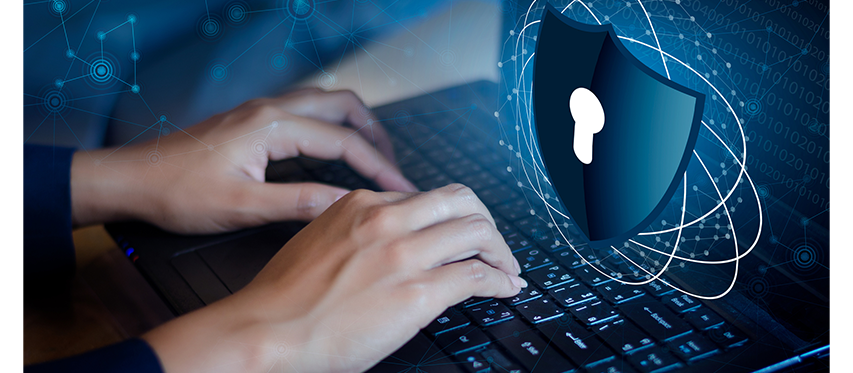
During the mid-October CyberSat Gov “Security in Connectivity” Summit, industry experts in satellite, space, cyber and government discussed solutions for thwarting next-generation attacks. Dr. Rajeev Gopal, vice president, Advanced Programs at Hughes, joined a group of panelists to discuss satellites, security, 5G and the Internet of Things (IoT).
Here, Dr. Gopal addresses some of the themes related to the topics covered during the panel.
As we move towards a 5G era, where do satellites fit within this future network environment?
Geostationary satellites have been essential communications infrastructure for decades. With High-Throughput Satellites (HTS), the capacity and economics make them even more indispensable. That is not going to change with the coming of 5G. In fact, satellite will be a critical part of the 5G “network of networks”—both in supplying backhaul and in enabling the resiliency and reliability that 5G promises. Add LEO satellites to the mix, and the proposition becomes even more compelling, as the multi-transport network of networks supports 5G use cases from IoT to cell backhaul to satellite broadband. And S-Band/L-Band satellites enable connectivity to very small devices such as handheld or IoT sensors. Tomorrow’s landscape will include unified network transport with 5G terrestrial, the reach of Geostationary satellites (GEO), the fast propagation of Low Earth Orbit (LEO) satellites, and the rapid deployment of High-Altitude Pseudo-Satellites (HAPS). The fact is that satellite is essential to enable connectivity to 100% of the world. That’s why satellite is part of the 3GPP (3rd Generation Partnership Project) mobile standards for 5G.
Satellite technology has always been on the network edge, outside the mainstream. Is the role of satellite changing in Cloud/IoT infrastructures?
I wouldn’t be so quick to dismiss the importance of the network edge—both in terms of supporting applications and network security. Hughes recently announced our new artificial intelligence (AI) for IT operations (AIOps) solution for enterprise Wide Area Networks (WANs). Already in use across more than 32,000 managed sites, the technology automatically predicts and preempts—or “self-heals”—undesirable network behavior, preventing service-disrupting symptoms in 70% of cases. Hughes is the first managed services provider to deliver a self-healing WAN edge capability to enterprise customers. This innovation targets WAN edge systems, such as routers, SD-WAN devices and firewalls, because a failure in those systems at the edge can be catastrophic for a site and cost hours of network downtime.
Yes—satellites will play an important role in extending 5G connectivity farther away from the network core. But it will also be critical in non-rural areas—where LEO service can complement 5G in carrying certain types of traffic. And GEO delivers the capacity density—even in urban areas—needed for services such as in-flight connectivity and can cost-effectively transmit large amounts of latency-sensitive communications, like aggregated IoT data.
Use of the Cloud simplifies the equipment needed at the edge. It also demands effective connectivity—no matter where you are—which satellite helps enable everywhere.
Will satellite be a large part of government-based networks going forward?
Satellite has been, and will continue to be, a huge part of the connected future for all networks. So yes, it is already integral to government networks. Satellite serves an essential role, whether connecting remote and hard-to-reach sites or airborne platforms, or enabling the type of resilient, redundant and interoperable networks our military requires to support the warfighter. Hughes has also demonstrated AI rules-engine technology for PACE planning and a Flexible Modem Interface (FMI) for automated switchover of modems, satellites, and service providers in government and military networks.
We are seeing some interesting deals involving satellite players, like the SES and Microsoft collaboration. Can we expect to see more?
This is part of the evolving technology landscape prompted by the significance of the cloud, AI/ML, and data lakes. And the satellite industry is leveraging them well, as articulated by our CEO during the recent keynote address at Satellite Innovation 2020. I think the SES/Microsoft announcement reflects the kind of cross-industry collaboration that we are seeing everywhere. You could look at Hughes and Facebook—and our partnership to power Community Wi-Fi hotspots. We’ve now deployed over 1,000 of them throughout Latin America.
Do you believe IoT devices are more open to be compromised?
Security is a crucial aspect as IoT represents the largest expansion of potential target devices in the history of the Internet. Many tech heavy homes and business locations already have more IoT devices than personal computing devices on their networks. As the devices age to the point of not being supported by their manufacturer, they will stop being patched against newly found vulnerabilities. A key to minimizing any negative impact will be isolating them from other devices on the local network and the Internet. The private network capabilities provided by satellite along with network segmentation capabilities built into modems, integration with firewalls and SD-WAN can provide isolation of IoT devices while ensuring their necessary connectivity.
Will satellites go beyond the Aero, Maritime, and Oil & Gas markets?
Absolutely. I would add land-mobile applications—even manpacks in the defense sector rely on satellites. There is no competition from fiber because fiber cannot move with you. Mobility is going to be the key driver of connectivity—and network complexity—going forward.
What does COVID portend for new security initiatives?
The current environment, with so much “work from home” activity, has escalated the focus on security. Many companies had to rush to augment their security infrastructure and processes. Like other large service providers, we now see greater use of security controls that were already in place, such as VPN and two-factor authentication—which are effective and important security measures.
For Hughes, COVID has not been a disrupter in terms of deploying solutions or enabling the security our customers need. Black swan events are the new norm and good technology, processes, and training will benefit us all.